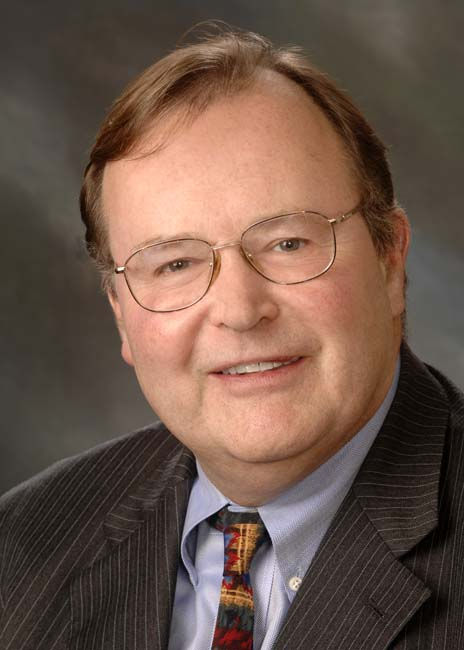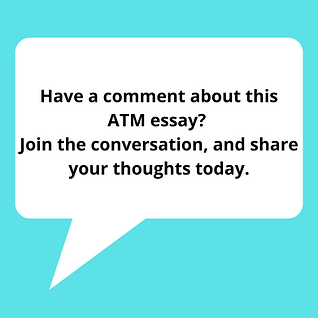
David Cowles
Dec 1, 2024
“Pando is Pando because Pando isn’t ‘Pando’ anymore!”
The largest living organism on Planet Earth is not a Sea Mammal or a Dinosaur or Nessie; it’s a tree. A single tree. One organism. And it’s not a Redwood or a Cedar but an Aspen, a Quaking Aspen as it turns out.
Where is this mega-biome located? Utah. Where are they hiding it? In plain sight. In fact you could be standing in the midst of Pando right now. To you, it would look like a forest, and so it would be. But all those tree trunks that surround you, blocking your way are ‘stems’ (parts) of one, single tree.
Pando is triploid, meaning that its cells contain three copies of each chromosome rather than two. As a result, Pando cannot reproduce sexually; instead it clones itself, over and over. Today, it consists of 40,000 trunks, supported by a single, vast root system covering an area the size of 100 American football fields.
Pando is at least 15,000 years old. Its individual trunks, however, have a Life Expectancy of just a few hundred years. This is the Ship of Theseus Hot Link writ large; not one of Pando’s OG trunks is alive today, and yet Pando is still very much Pando.
Materially, we are dealing with an organism that is completely different now from what it was in its early years. What has been preserved is the DNA, the computer code that runs it; as a result, the pattern of relationships we call Being Pando is conserved over however many generations:
Pando is Pando because Pando isn’t ‘Pando’ anymore!
Let’s go back to the beginning. Out of some undetermined past shrouded in biology’s mythical mists, an aspen-zygote has been conceived. Call it ‘Alfie’. On schedule, Alfie undergoes mitosis leaving us with ‘Brian’ and ‘Charlie’. How are they related? And what happened to Alfie?
You can say that neither Brian nor Charlie is Alfie; or you can say that both Brian and Charlie are Alfie. But please don’t say that Brian is Alfie but not Charlie, or Charlie but not Brian, because Brian and Charlie are interchangeable products of Alfie’s mitosis. Alfie doesn’t play favorites; like you, it loves all its children exactly the same.
So are trees sentient, intelligent, self-aware, conscious? Interestingly, debate over this goes back millennia. It seems, for example, that the ancient Greeks and the Celts, at least, believed that trees displayed intentionality and self-awareness. This idea would have been a lot less popular in the latter half of the 19th century CE.
However, the pendulum has swung back. There is little doubt now that trees and forests display some mental processes. Communication occurs, family members are recognized. In the allocation and exchange of resources (minerals, water), special care is taken to provide for the young, the sick, the unthriving, the elderly, and even the deceased.
Unlike some members of another species I could name, trees naturally engage in eleemosynary behavior. Is this the product of natural selection or is it evidence that trees follow some sort of ethical code? If so, how does that code come to be? Does it emerge democratically or is it hard wired by a transcendent agency?
Smart as it may be, Pando can’t read the Bible. But there is a school of thought that considers Written Torah (the first 5 books of the Old Testament) to be a codification of pre-existent Oral Torah, (aka Natural Law). In this way, Torah is accessible to all sentient beings, including Pando: “signatures of all things I am here to read.” (Joyce)
Natural Law is woven into the fabric of being itself. It’s what gives it its shape. In Written Torah, there are 2 verses that, taken together, constitute what’s known as the Great Commandment. According to some schools these 2 mitzvoth summarize the other 611. One, as cited by Jesus, is to “Love your neighbor as yourself.”
As, not like! Unlike standard prescriptions to ‘behave charitably’, the Great Commandment eliminates the ontological distinction between the donor and the donee. This is not ‘charity’; it is ‘mutuality’. You give to your neighbor, if you do, for only one reason – because your neighbor is you – and you don’t get any extra credit for doing right by yourself.
So Pando does seem to follow some sort of ethical code, but it is not easy imagining what sort of ideation might accompany that process. Is Pando ‘conscious’? If so, where does that consciousness reside? Externally (in the noosphere), in the organism-entire, in the individual trunks, or in each of the constituent cells?
The form of our questions betrays us. We have assumed that consciousness is an either/or affair: there is only one Pando-consciousness and it occurs at only one particular biological level. But what if it’s not? What if it’s an and/both affair? What if Pando-consciousness can and does occur at several different levels of biology simultaneously?
Now if you were 5 years old, you’d know exactly what question to ask next. But you’re not so I’ll help you: “Are, for example, cellular-conscious and organism-conscious Pando aware of one another? Do they impact one another? Do they communicate (share info)?”
If human physiology is the paradigm of a Hamiltonian central bank, the plant kingdom relies on blockchain. Imagine the Billboard: “Blockchain. Endorsed by the Plant Kingdom: It’s the only brain we trust.” Wow! I could-a-been a Mad Man!
Lacking a centralized nervous system, decision making by plants is necessarily ‘distributed’ throughout the organism. And it’s not only plants. Animals too can process data on a decentralized network. In an octopus, for example, independent mental structures are located in each of the individual tenacles; they communicate and coordinate across a network.
So far, we have been unable to isolate a particular structure that enables consciousness (an if and only if). What does the human brain have in common with a bacterium that allows us to use the word conscious in both contexts? What would it mean to say that an adult human and a bacterium are both ‘conscious’? Would a bacterium’s experience of consciousness have anything in common with a human’s experience?
What would it mean to have something in common…or to have nothing in common at all?
Two entities that have nothing in common do not exist in the same universe. So there will be an element of commonality. That element may be precisely the phenomenon we want to call ‘consciousness’; but how to isolate it?
…Oh…I get it…you were waiting for an answer? Sorry, I’m two Nobels short for that.
All of which brings us back to that “certain unnamed animal species” we met earlier. Am I Pando? (Or at least Pando-like?) Am I one of the 8 billion living trunks (persons) or am I one aspect of a single organism (species)?
Do I automatically do unto myself what I do unto others? If so, then morality is not a choice; it is a fact of life. What if reality itself is recursive? What if we live in a universe with a curved or folded (vs. flat) topology? In such a universe the Law of Karma is fundamental: it’s not about a reaction to an action. Karma is an embedded element in every action per se; it is prerequisite to the constitution of an event.
Every action bridges the gap between one settled state-of-affairs and another. But in bridging that gap, a twist in structure means that bridge also acts on itself, modifying itself as it performs its bridging function.
So, Newton had it wrong. Every action (active voice) does not entail an equal and opposite reaction (passive voice). Rather action and reaction are two interchangeable aspects of a single event (middle voice). We have a lot to learn, working alongside our Quaking Aspen!

David Cowles is the founder and editor-in-chief of Aletheia Today Magazine. He lives with his family in Massachusetts where he studies and writes about philosophy, science, theology, and scripture. He can be reached at dtc@gc3incorporated.com.

Do you like what you just read? Subscribe today and receive sneak previews of Aletheia Today Magazine articles before they're published. Plus, you'll receive our quick-read, biweekly blog, Thoughts While Shaving.



